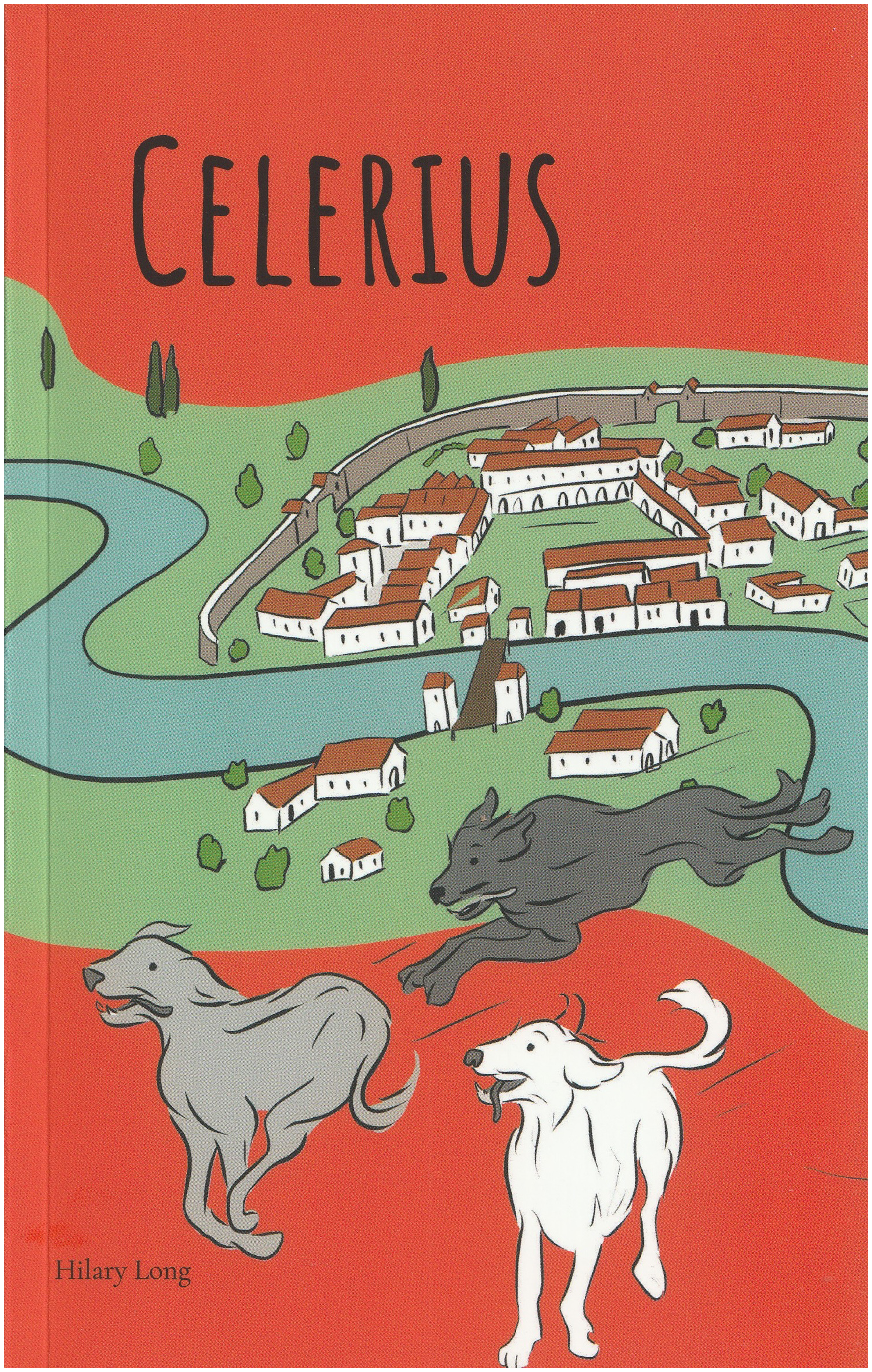
Celerius is the third in the series of brief novellas or short stories about the dog Celer from the Suburani Latin coursebook, penned by US Latin teacher Hilary Long and illustrated by Hannah Smith (the other two being Celer and ludi Suburani). It follows the usual pattern set by these stories in being aligned with the vocabulary and grammar of the early chapters 1–11 of Suburani Book 1 (present, imperfect and perfect indicative, present infinitive, imperative and simple subordination with quod). The guiding principles of these novellas is to develop students’ reading fluency through easy-reading, meaning-focused narrative, based on a familiar set of characters which are designed to activate engagement and interest in reading. Vocabulary is repeated and recycled and heavily signposted with pictures; 24 words are easy-to-recognise English cognates and 18 are proper nouns. A full set of all vocabulary in all forms used is at the end of the book, and a small number (72) of key words and phrases which might cause confusion are given at the bottom of each page. Text font is large and clear – there is plenty of white space. In all, the novella is 961 words long.
The story itself is well designed. Without giving away the plot, Celer, the dog belonging to Gisco in the Suburani series, tells the back story of his life in Britannia before he came to Rome: a dreamy (if sometimes rainy) existence of eating, sleeping, and (buyers beware!) peeing and farting. A touch of romance leaves open an unresolved ending that students might like to work out for themselves. The recycling of vocabulary is expertly done, with much repetition caused by the interruptions and digressions of other characters. The adverb celerius makes a frequent appearance and provides opportunities for some simple comparative clauses and humorous asides.
From a pedagogical point of view, the independent reader could make good use of the book – especially as it links with the other two in the series. Although the material aligns with Suburani, the series can stand on its own and be used separately from it. No knowledge of the characters or situations in Suburani is required. Alternatively, one might see Celerius used as a class reader, with individuals taking the roles of the different characters in the story – the dog Celer himself as narrator (teacher or a strong student reader), as well as the several other animals taken by other members of the class. Reading the story once might not be enough – one might envisage the text becoming the source for a recording or even a small play. Students might enjoy elaborating the final elements of the story, or completing it in simple Latin for themselves.
We await the conclusion in the next book!


